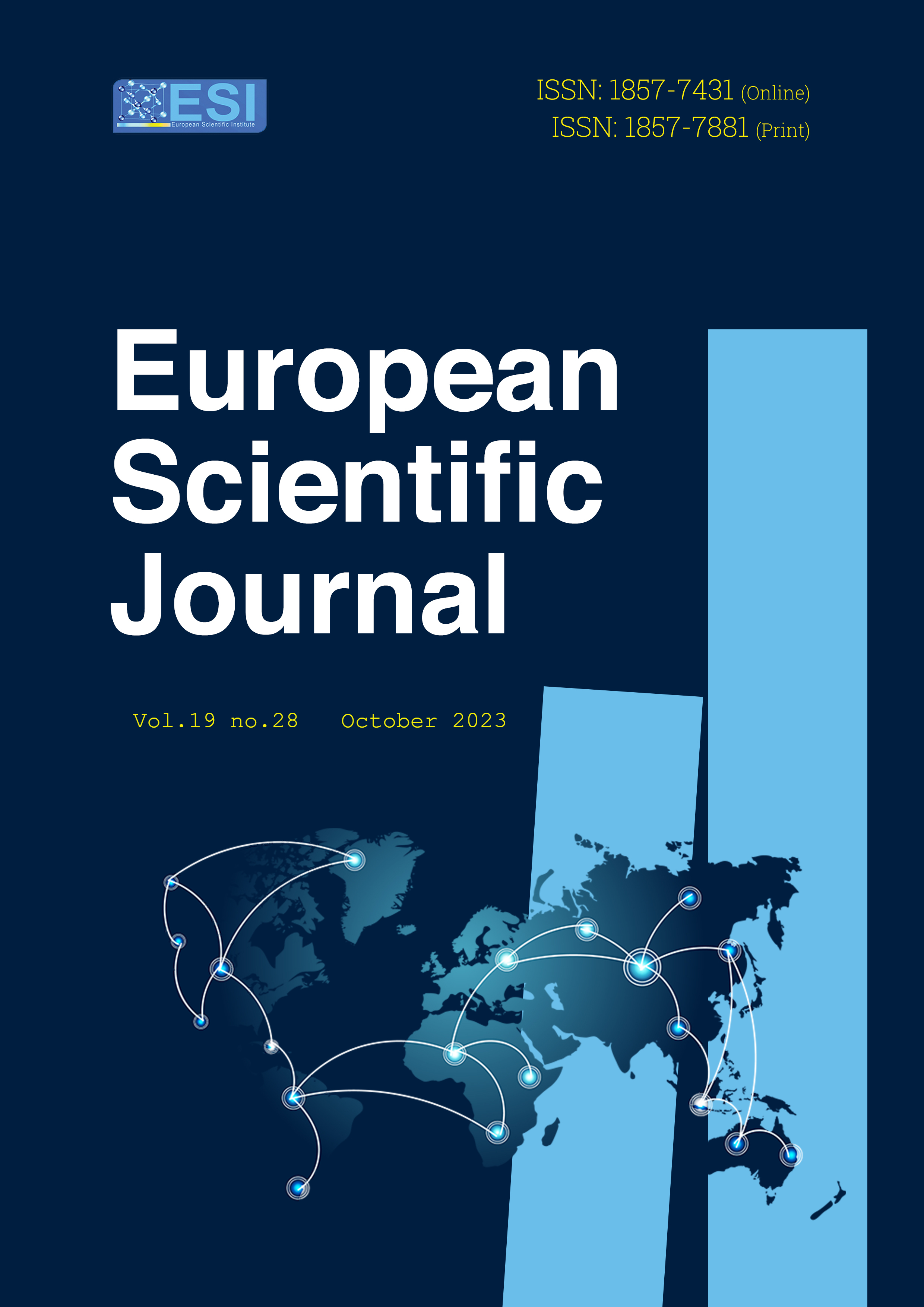The Impact of Takaful Insurance on the Manufacturing Industry in Malaysia: Empirical Evidence through ARDL Bounds Testing Approach
Abstract
In post-financial crisis, the interconnection between the financial sector and real activity is gaining more interest in the literature. Given that the insurance sector represents a large part of the financial globe, it will be essential to explore its impact on the real economy. Further, the expansion of participative finance, in the last decade, requires contextualising the question in this sense. However, this paper experiments with the effect of Takaful insurance on real activity in Malaysia. Hence, an ARDL model is estimated on quarterly data between 2010Q1 and 2017Q4. The results show a positive and significant impact of the increase in Takaful contributions to manufacturing activity. On the same side, a long-term relationship between the two sides is established in the image of a significative cointegration.
Downloads
Metrics
PlumX Statistics
References
2. Ansari, S., & Bahari, Z. Bin. (2021). The role of micro Takaful industry for the achievement of Islamic financial inclusion in Pakistan. Middle East J. of Management, 8(2/3), 125–139. https://doi.org/10.1504/mejm.2021.113978
3. Archer, S., Karim, R. A. A., & Nienhaus, V. (2012). Conceptual, Legal, and Institutional Issues Confronting Takaful. Takaful Islamic Insurance: Concepts and Regulatory Issues, 1–5. https://doi.org/10.1002/9781118390528.CH1
4. Arena, M. (2014). Does Insurance Market Activity Promote Economic Growth ? A Cross-Country Study for Industrialized and Developing Countries Does Insurance Market Activity Promote A Cross-Country Study Economic Growth ? for Industrialized and Developing Countries. 75(4), 921–946.
5. Asteriou, D., & Spanos, K. (2018). The Relationship between Financial Development and Economic Growth during the recent Crisis: Evidence from the EU. Finance Research Letters, 238–245. https://doi.org/10.1016/j.frl.2018.05.011
6. Billah, M. M. (2019). Preview of General Takaful. Islamic Insurance Products, 67–73. https://doi.org/10.1007/978-3-030-17681-5_4
7. Creel, J., Hubert, P., & Labondance, F. (2014). Financial stability and economic performance. Economic Modelling, 25–40. https://doi.org/10.1016/j.econmod.2014.10.025
8. Dash, S., Pradhan, R. P., Maradana, R. P., Gaurav, K., & Zaki, D. B. (2018). Insurance market penetration and economic growth in Eurozone countries : Time series evidence on causality. Future Business Journal, 4(1), 50–67. https://doi.org/10.1016/j.fbj.2017.11.005
9. Dawd, I., & Benlagha, N. (2023). Insurance and economic growth nexus: New Evidence from OECD countries. Cogent Economics and Finance, 11(1). https://doi.org/10.1080/23322039.2023.2183660
10. Faisal, M. (2016). Micro-takaful in India: a path toward financial inclusion and sustainable development. In Takaful and Islamic Cooperative Finance, 300–323. https://doi.org/10.4337/9781785363368.00027
11. Gherbi, A. A. (2020). The Role of Bancatakāful in Developing and Protecting the Islamic Financial Industry. Journal of King Abdulaziz University, Islamic Economics, 33(3), 3–40. https://doi.org/10.4197/Islec.33-3.1
12. Greuning, H. van, & Iqbal, Z. (2007). Banking and the risk environment. Islamic Finance: The Regulatory Challenge, 9–39.
13. Haiss, P., & Sümegi, K. (2008). The relationship between insurance and economic growth in Europe: A theoretical and empirical analysis. Empirica, 35(4), 405–431. https://doi.org/10.1007/s10663-008-9075-2
14. Hamza, H., & Saadaoui, Z. (2013). Investment deposits, risk-taking and capital decisions in Islamic banks. Studies in Economics and Finance, 30(3), 244–265. https://doi.org/10.1108/SEF-FEB-2012-0016/FULL/XML
15. Haroun, A. E., & Effandi, M. (2019). Micro-Takaful as stimulus for financial inclusion : A key component towards sustainable development. Open International Journal of Informatich (OIJI), 7(2), 43–55.
16. Hasan, M., & Dridi, J. (2011). The effects of the global crisis on Islamic and conventional banks: A comparative study. Journal of International Commerce, Economics and Policy, 2(02), 163–200.
17. Hassan, H. A. (2020). Takaful models: origin, progression and future. Journal of Islamic Marketing, 11(6), 1801–1819. https://doi.org/10.1108/JIMA-04-2018-0078
18. Hussain, M. M., & Pasha, A. T. (2012). conceptual and operational differences between general takaful and conventional insurance. Australian Journal of Business and Management Research, 01(08), 23–28. https://doi.org/10.52283/nswrca.ajbmr.20110108a03
19. Ibrahim, M. H. (2016). Business cycle and bank lending procyclicality in a dual banking system. Economic Modelling, 55, 127–134. https://doi.org/10.1016/j.econmod.2016.01.013
20. IFSB. (2021). Stability report 2021.
21. Intharak, K., Chancharat, S., & Jearviriyaboonya, J. (2023). A meta-analysis of Thailand’s financial development and economic growth. Asia-Pacific Journal of Science and Technology, 28(5). https://www.scopus.com/inward/record.uri?eid=2-s2.0-85168157523&partnerID=40&md5=df54a8bc6c16a644bd28d530a6654fa6
22. Ismail, W. Z. W., Yusof, M. F. M., & Ahmad, I. (2021). Capital Management for Takaful Business: Issues and Challenges. Journal of Advanced Research in Business and Management Studies, 22(1), 8–19.
23. Izzati, N., Aziz, M., & Kassim, S. (2020). The Contributions of Takaful Industry towards Economic Growth, Savings and Investment in Malaysia. In International Journal of Advanced Research in Economics and Finance (Vol. 2, Issue 3), 31-38. http://myjms.mohe.gov.my/index.php/ijaref
24. Malik, A., & Ullah, K. (2019). Takaful and Its Shariah Compliance. Introduction to Takaful, 33–43. https://doi.org/10.1007/978-981-32-9016-7_3
25. Pesaran, M. H., Shin, Y., & Smith, R. J. (2001). Bounds testing approaches to the analysis of level relationships. Journal of Applied Econometrics, 16(3), 289–326. https://doi.org/10.1002/jae.616
26. Rawat, A. S., & Mehdi, S. K. (2017). The Impact of Islamic Banks and Takaful Companies on Economic Growth: A Case of Pakistan. Journal of Finance & Economics Research, 2(2), 130–143. https://doi.org/10.20547/jfer1702203
27. Shahid, I. (2018). Macroeconomic essence of Takaful: Exploring the significance and impact of Takaful in macroeconomic context. Journal of Emerging Economies & Islamic Research, 6(1), 1–6.
28. Singhal, N., Goyal, S., & Singhal, T. (2022). The relationship between insurance and economic growth in Asian countries: a regional perspective. Macroeconomics and Finance in Emerging Market Economies, 15(3), 301–322. https://doi.org/10.1080/17520843.2021.1957599
29. Ward, D., & Zurbruegg, R. (2000). Does Insurance Promote Economic Growth? Evidence from OECD Countries. The Journal of Risk and Insurance, 67(4), 489–506. https://doi.org/10.2307/253847
30. Yazid, A. S., Arifin, J., Hussin, M. R., & Wan Daud, W. N. (2012). Determinants of Family Takaful (Islamic Life Insurance) Demand: A Conceptual Framework for a Malaysian Study. International Journal of Business and Management, 7(6), 115–127. https://doi.org/10.5539/ijbm.v7n6p115
Copyright (c) 2023 Achmakou Lahoucine

This work is licensed under a Creative Commons Attribution 4.0 International License.








